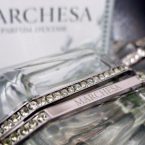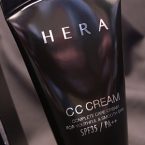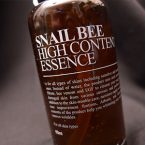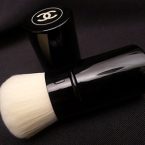Su:m37° Secret Repair Concentrate Review
Affiliate Links I Bought This August 5, 2014 | Asian Skincare, Serum, Skincare
Anyone who has ever been out to eat with me with any regularity knows that I have thing for weird pickles. If it’s a vegetable and it’s pickled, I will devour it; the weirder the vegetable and the funkier the ferment, the better. I think my voracious appetite for fermented foods played a part in my eagerness to dive face first into the Su:m37° product line up, a Korean brand that specializes in fermented skincare ingredients. I’ve yet to try a Su:m37° product I don’t like, but today I’ll be focusing on one of my favorites: the Su:m37° Secret Repair Concentrate.

I bought my Su:m37° Secret Repair Concentrate from W2Beauty, and was delighted to find that it came in the form of this special set. The special set has limited seasonal availability; your Su:m37° Secret Repair Concentrate may come as a standalone product.
What is it?
Su:m37° Secret Repair Concentrate is a face serum that claims to repair skin damage, strengthen the moisture barrier, and increase resilience and firmness of skin.
The “37°” in the Su:m37° brand name is said to be the (Celsius) temperature of the environment where the selected plants are fermented. Additionally, Su:m37° says that the ~80 plant types used in their products are very carefully chosen. Only plants with completely healthy roots, stems, flowers, leafs, seeds, and fruits are selected for the fermentation process, which is said to take 365 days.
Ingredients :
(Updated August 10, 2014)
Water, Glycerin, Dipropylene Glycol, PEG/PPG/Polybutylene Glycol-8/5/3 Glycerin, Dimethicone, Glyceryl Polymethacrylate, 1,2-Hexanediol, Bis-PEG-18 Methyl Ether Dimethyl Silane, Saccharomyces/Vitis Vinifera (Grape) Fruit/Peduncle/Stalks Ferment Extract, Cyclopentasiloxane, Saccharomyces/Viscum Album (Mistletoe) Ferment Extract, Niacinamide, Methyl Trimethicone, Panthenol, Phenyl Trimethicone, Dipropylene Glycol, PEG-150, Lactobacillus/Soybean Ferment Extract, Kluyveromyces/Lactobacillus/Acanthopanax Koreanum Bark/Stem Oil Ferment Filtrate, Lactobacillus/Ampelocissus Martini Fruit/Lavender Flower/Rosa Canina Fruit/Rosemary Leaf/Sage Leaf/Thyme Leaf Extract Ferment Filtrate, Acetobacter/Aspergillus/Lactobacillus/Leuconostoc/Pediococcus/Saccharomyces/Zygosaccharomyces/Citrus Unshiu Fruit/Citrus Japonica Fruit/Citrus Junos Fruit/ Apple Fruit/Banana Fruit/Papaya Fruit/ Pyrus Serotina Fruit/ Diospyros Kaki Fruit/Watermelon Fruit/Peach Fruit/ Prunus Mume Fruit/Fig Fruit/Chaenomeles Sinensis Fruit/Eriobotrya Japonica Fruit/Apricot Fruit/ Zizyphus Jujuba Fruit/Cucurbita Maxima Fruit/Castanea Crenata Fruit/Vitis Coignetiae Fruit/Raspberry Fruit/Momordica Grosvenorii Fruit/Lycium Chinense Fruit/Glycine Max Seed/Phaseolus Angularis Seed/Canavalia Ensiformis Seed/Rice Seed/Hordeum Vulgare Seed/Coix Lachryma-Jobi Ma-Yuen Seed/Echinochloa Crus-Galli Seed/Setaria Italica Seed/Millet Seed/Hemerocallis Fulva Flower/Cabbage Leaf/Stem/Morus Bombycis Leaf/Perilla Frutescens Leaf/Ipomoea Batatas Root/Colocasia Antiquorum Tuber/Dioscorea Batatas Rhizome/Iridea Laminarioides/Laminaria Japonica/Nemacystus Decipiens/Undaria Pinnatifida/Radish Root/Turnip Root/Carrot Root/Arctium Lappa Root/Nelumbo Nucifera Rhizome/Onion Bulb/Lilium Auratum Bulb/Licorice Root/Sagittaria Trifolia Root/Sesame Seed/Ginkgo Biloba Seed/Juglans Subcordiformis Fruit/Panax Ginseng Seed/Actinidia Polygama Fruit/Hydnum Erinaceum Fruiting Body/Grifola Frondosa Fruiting Body/Prunus Salicina Fruit/Akebia Quinata Fruit/Crataegus Cuneata Fruit/Cornus Officinalis Fruit/Nephelium Longana Fruit/Houttuynia Cordata/Artemisia Princeps/Sasa Veitchii Leaf/Glechoma Hederacea/Chamomilla Recutita Flower/Equisetum Arvense/Cassia Obtusifolia Seed/Taraxacum Officinale/Isodon Japonicus/Safflower Flower/Plantago Asiatica/Smallanthus Sonchifolius Root/Garlic Bulb/Ginger Rhizome/Beet Rhizome/Polygonum Odoratum Rhizome/Turmeric Rhizome/Acanthopanax Siebodianus Root/Pinus Koraiensis Seed/Lentinus Edodes Fruiting Body/Auricularia Auricula/Vitis Labrusca Fruit/Helianthus Tuberosus Tuber Ferment Extract, Saccharomyces/Imperata Cylindrica Root Ferment Extract, Wine Extract, Kluyveromyces/Lactobacillus/Camellia Japonica Seed Oil Ferment Filtrate, Algae Extract, Macrocystis Pyrifera (Kelp), Ceramide 3, Phytosqualane, Butyrospermum Parkii (Shea) Butter, Cholesterol, Polymethylsilsesquioxane, Hydrogenated Lecithin, C14-22 Alcohols, Macadamia Ternifolia Seed Oi, PEG-60 Hydrogenated Castor Oil, Dimethiconol, Tromethamine, Triethylhexanoin, Glyceryl Stearate, Glyceryl Acrylate/Acrylic Acid Copolymer, Stearic Acid, Adenosine, Arachidyl Glucoside, PEG-10 Rapeseed Sterol, Butylene Glycol, Glycereth-20, PEG-100 Stearate, Acrylates/C10-30 Alkyl Acrylate Crosspolymer, Carbomer, Sodium Polyacrylate, Algin, Theobroma Cacao (Cocoa) Extract, Mica, Titanium Dioxide, CI77491, Trisodium EDTA, Santalum Album (Sandalwood) Oi, Lavandula Angustifolia (Lavender) Oil, Citrus Aurantium Bergamia (Bergamot) Fruit Oil, Chamomilla Recutita (Matricaria) Flower Oil, Citrus Aurantifolia (Lime) Oil, Citral, Limonene, Linalool
Special thanks to Agata for the ingredient translation!
There are two potential reactions to this ingredient list: excitement over the sheer number of fermented ingredients in this formula, or befuddlement as to why one would want to smear a bunch of old fruit on one’s face.
Here’s a little background on fermented skincare:
There haven’t been a whole lot of studies conducted specifically on the effects of fermented ingredient compounds in topical skincare applications – yet. However, there have been a few studies that show the bioavailability of topically applied components is increased by the fermentation process, and there have also been studies that successfully showed an overall increase in nutrient density and antioxidant activity in some individual plants as a result of fermentation.
Fermentation is a metabolic process in which sugars are converted to acids, gases, or alcohol as a result of the growth and metabolic activity of a colony of “good” microorganisms. In this Su:m37° serum, the sugars in the fruits and plants used are primarily converted to acids. The microorganisms used to facilitate the fermentation are Lactobacillus and yeast. I’m not sure what Su:m37°’s fermentation process is specifically, but typically in a lacto-fermentation scenario, the ingredients are submerged in a salt brine that kills bad bacteria, but allows good bacteria to thrive. The mixture is then kept in an anaerobic (absent of free-oxygen) environment, where the microorganisms break down carbohydrates and other organic constituents into enzymes, lactic acid, and amino acids.
The idea behind the use of fermented ingredients in topically applied skincare products is that the breakdown of the plant matter results in smaller, simpler molecules that are more readily absorbed by the skin, as well as increased antioxidant activity. The yeast itself also possesses some moisturizing benefits, and is a viable source of peptides and amino acids, the former of which has moisture-binding properties and the latter of which is theoretically beneficial to collagen production. Additionally, the shelf life of a properly fermented product drastically increases since the environment is hostile to bad microorganisms, while still allowing good microorganisms to thrive.
I’ve seen a few passing claims that topically applied fermented ingredients can help prevent and treat acne, but I have yet to find any study on that particular topic, much less one that proves this is true.
Therapeutic advantages of medicinal herbs fermented with Lactobacillus plantarum, in topical application and its activities on atopic dermatitis.
Phytotherapy Research, July 2009
Increased anti-oxidative potency of garlic by spontaneous short-term fermentation
Plant Foods for Human Nutrition, December, 2006
The bioavailability of red ginseng extract fermented by Phellinus linteus
Journal of Ginseng Research, March 2013
Fermenting red ginseng enhances its safety and efficacy as a novel skincare anti-aging ingredient: in vitro and animal study.
Journal of Medicinal Food, November 2012
There are a lot of plants in the Su:m37 ferment compound, which possess a varying range of antioxidant, anti-inflammatory, and astringent properties, as well as an array of vitamins, including A, C, and E.
Additional star ingredients include:
Glycerin
Glycerin is an odorless, colorless, viscous sugar alcohol compound. Its humectant properties make it a popular cosmetic ingredient. Pure glycerin is able to absorb it’s own weight in water over a period of 3 days, and has been shown in numerous studies to improve skin elasticity, moisture, and barrier function.
Glycerol accelerates recovery of barrier function in vivo
Acta Dermato Venereologica, November 1999
Glycerol replacement corrects defective skin hydration, elasticity, and barrier function in aquaporin-3-deficient mice
Proceedings of the National Academy of Sciences of the United States of America, May/June 2003
Niacinamide
Niacinamide is a form of Vitamin B3 that works well for overall brightening, lightening hyperpigmentation, and acne. This is a well-documented skincare ingredient. One study even showed it to be effective for reducing fine lines in addition to treating redness and hyperpigmentation:
Niacinamide: A B Vitamin that Improves Aging Facial Skin Appearance
Dermatologic Surgery, 2006
Betaine
Humectant and anti-irritant. Some studies have shown it to be less irritating than pure water. Betaine protects against cellular dehydration that can sometimes occur when cells absorb substances though osmosis.
No major red flags popped up on CosDNA for this serum in terms of its potential as an irritant or an acne trigger. However, there are quite a few ingredients in this formula that don’t have any data in CosDNA at all, so many, in fact, that I was unable to save the product in the CosDNA database.
Performance
Appearance
The bottle for the Su:m37° Secret Repair Concentrate is a beauty. It’s two layers of thick plastic, the outer layer being translucent and the inner layer possessing a smooth, matte-metallic light bronze finish. This two layer packaging makes for a very sturdy bottle that’s beautiful to behold in real life, but is a real pain in the rear to photograph. The cap is adorned with Su:m37°’s signature bejeweled emblem in red.
The serum itself is an opalescent beige. If it had come out of my body, I would think it looked disgusting, but since it came out of a beautiful Su:m37° bottle, I think it looks quite lovely. It’s a thick serum – it has the dense, slippery texture I would normally associate with a silicone based product.
pH
The pH for this product is ~6.0.
Smell
I took German back in high school, and one day we had a German themed-potluck where everyone was assigned a German-themed dish to bring in. I was tasked with bringing in the sauerkraut. I was happy to oblige, but I mistakenly thought it would be wise to transport it in a homey-looking bowl instead of whatever packaging it originally came in. Because Murphy’s Law is a thing, I predictably tripped and fell in the crowded hallway on my way to class, spilling the sauerkraut everywhere, which immediately permeated the air with the unmistakable smell of cabbage farts. It was mortifying. I still eat sauerkraut because it’s delicious, but I can’t eat it without at least briefly reliving that moment.
As much as I love fermented foods, I do not want my skincare products to smell like ferment. Thankfully, the Su:m37° Secret Repair Concentrate smells delightfully like flowers and citrus. The faint smell of yeast is detectable a few hours after application, but nothing overpowering.
Application
I apply Su:m37° Secret Repair Concentrate in the evening immediately after my hydrating toner, which is step 8 in my evening skincare routine. I use three pumps, which I gently massage over my face and neck, including my eye area.
Results
I’ve been using the Su:m37° Secret Repair Concentrate nightly for ~18 weeks. As for immediate results, I noticed a marked increase in the “bounciness” of my skin after about a week and a half, a quality which continues to be present to this day. I continually notice a temporary softening of fine lines (mine are in my eye area). I also experienced an overall brightening and a lightening of post-inflammatory hyperpigmentation over the duration of this product’s usage, but I am extremely hesitant to attribute that to this serum since I’m also using other products with far more powerful lightening/brightening properties. This serum also gives me an extra layer of non-greasy moisture, which is always welcome for my dry skin type. Additionally, I find it to be extremely soothing, particularly when I’ve leaned a little too hard on my AHA or BHA treatments.
As for long term effects, I believe this serum largely functions as a preventative anti-aging measure in the same way other antioxidant serums do. Sadly, I have no visible way to measure this. I can say that as far as antioxidant serums go, this one in particular is luxurious and very pleasurable to use. I love how smooth my skin feels the morning after I’ve used it, and on the few nights I skipped it, I missed it terribly. The extra moisture and fine line softening are welcome qualities, and I get some sort of sick pleasure out of knowing that I have a colony of friendly microorganisms hanging out on my face.
I have not had any breakouts, irritation, or increases in skin sensitivity as a result of using this product.
I don’t think this serum is an absolute necessity – there are far cheaper antioxidant serums out there that can get the job done. However, I like the idea that the antioxidants in Su:m37° Secret Repair Concentrate are potentially more readily absorbed by the skin, as well as the other short term benefits this product provides. If you’re just starting to build your skincare routine or are trying to be thrifty, you’d do fine with a less expensive antioxidant serum. But if you, like me, are obsessed with skincare products and are willing to pay more for a little bit of luxury and a chance to try something new and novel, Su:m37° Secret Repair Concentrate will not disappoint.
Pros & Cons
| Pros | Cons |
|---|---|
|
|
Skin & Tonics Rating
| A | 18/20 Efficacy | 15/20 Ingredients | 20/20 Application | 20/20 Wear | 20/20 Packaging |
|---|---|---|---|---|---|
| Total: 93 | Rating system details » | ||||
Where to Buy
| Store | Price | Offers | |
|---|---|---|---|
| W2Beauty Online Korean cosmetics shop | $116.76 | First time W2Beauty customers can get a $5 W2Beauty voucher by entering my sponsor code at sign-up: 025605. | buy |
| Joongmart eBay Seller | $145.60 | buy | |
| Beautyshop Amazon Seller | $156.73 | buy |
This post contains affiliate links. Shopping these links helps support this site. Full disclosure »






















O…O but why is aspergillus an ingredient? I wonder if this is a mistranslation because I did buy something once that claimed to be a “leaven” ferment or some other kind of mold, and then when I got the package it said “aspergillus” which is really a black mold that causes deadly infections. :S
Ha! It’s very possible it’s a mistranslation! I have no experienced any deadly infections…yet.
I was wondering this about another product, too, but I think they mean aspergillus in the Latin/genus sense, meaning any one of several hundreds of mold species. Some are used in the sake fermentation process. From the Wikipedia Aspergillus page: “Other species are important in commercial microbial fermentations. For example, alcoholic beverages such as Japanese sake are often made from rice or other starchy ingredients (like manioc), rather than from grapes or malted barley. Typical microorganisms used to make alcohol, such as yeasts of the genus Saccharomyces, cannot ferment these starches. Therefore, koji mold such as Aspergillus oryzae is used to first break down the starches into simpler sugars.”
Aww, yeah, koji mold, make me pretty.
Oh wow, that’s interesting, Tracy! Thanks for the clarification. 😀
Omg I didn’t realise that it was a deadly mould when I was translating it /o\ It’s written as just “aspergillus” on the label, so that’s how I translated it without knowing it was only the genus name. You would think that they would have specified which species they had used, since they took the time to print out all the other 25483 ingredients lmao. It would have saved us from a lot of confusion and panic!
Thanks again for another great and informative post Kerry. I’ve seen the fermented hype but never quite understood how it’ll work for my skin, so I was so glad to be able to read it in your post. It’s really a shame that there is no way that we can gauge the effectiveness of anti-aging products. Since I’m 21 right now, I know preventive measure is great but Im also hesitant of dumping money on things I can’t “see”.
Speaking of fermented things, how is your ‘fermented treatment/toners/miracle water’ project going along?
Hey Annie! My fermented treatment water experiment is going very slowly, but it’s going! The latest I’ve tried are the Su:m37 Treatment Essence, and the Essential Skin Conditioner by Albion. Reviews to come soon!
No lie, the first paragraph of your post inspired me to go to the fridge and get a pickle. Thanks? 😛
Ha! Writing this post gave me an intense craving for the mixed pickles you get at the Indian restaurant. So intensely, lemony delicious. MMMM.PICKLES.
I love how I learn about the properties of certain compounds when I read your posts. I’m usually too lazy to read all that stuff labelled on the bottles, mainly because I don’t understand it. Now I’m slowly starting to get an idea of what I need to look out for when I’m buying new skin care products.
PS: I *love* Su:m products. It just seems.. special. Maybe it’s all the fermented stuff. (And us Koreans love our fermented foods lol)
Hi Daisy! Agreed, Su:m37 products have that special something for me as well. 🙂
Thank you so much for looking into the “why is this stuff so effective?” science side of fermented skincare. I keep encountering fermentation lines and products and they seem to work well even for my troubled skin–I started wondering if they just generally have lower pHs due to the fermentation process, but it does seem like they offer more than that. AWESOME!
I am particularly fascinated by fermented skin care too – I’m really hoping we’ll see some new studies emerge in the near future. It seems like there’s a lot of research potential for this stuff!
This post made me very curious about fermented skin care! Are there any other Korean skin care lines that use fermented ingredients? I’m interested in trying it out, but perhaps not at the price of Su:m37….
Great question, Ida! I believe a few of the more affordable brands have fermented lines now. Banila Co.’s “The Blacks” line is fermented, and The Faceshop also has a fermented line called “The Smim 100Y Fermentation.” I’m sure there are others as well – I’m interested to see if anyone can chime in with additions to that list!
I recently found a line by Purebess–just search for Purebess Galactomyces and the products will pop up. I really like what they’re doing for my skin, and the products are about $10 each including shipping at various eBay shops.
I haven’t heard of Purebess before – I’ll definitely check it out. Thanks for the rec, Tracy! 🙂
I found a line called The Saem CHAGA which looks promising. (http://testerkorea.com/search?q=The+Saem+CHAGA+Anti-aging).
Hey Kerry, this is off-topic but I was just wondering about the Benton Snail Bee High Content Essence, are there any news about product safety/quality? I’m still waiting for my order to get to me but I already bought it and am kinda scared to try it once it finally gets here. I was so excited to try this because of your amazing reviews, so how would you proceed? Thanks for the great advice! Love your website!
I wouldn’t worry, Dora! Only the essence from the MArch 5 batch was affected, and I believe all the sellers have stopped carrying that batch at this point. I’ve bought 2 bottles recently and they are both fine! 🙂
Hi Kerry,
Long time reader, first time poster. First up, I would like to congratulate you on another great review! I’ve recently overhauled my skincare routine and may I just say that you have been a major influence in the product choices. I have a question (or rather, questions) though – I know you are (were?) a fan of Estee Lauder’s ANR and was wondering if you have tried the new formulation? If you had, what are your thoughts on it? How does it stack against Su:m37° Secret Repair Concentrate?
Thank you!
Hi Yen! I do love Estee Lauder’s ANR, but I haven’t had a chance to try the new version yet. I think it may be next for me!
Sorry for the double post but I have got another question – how much of the Paula’s Choice C15 Booster do you use each time? I have been using approx. 5 drops each time but am concerned that I might not be using enough…
Hi Yen! I use a whole dropperful each time. 🙂
Thank you for replying and I look forward to your thoughts on it!
My list of su:m37 products that I must try next is growing. Right now I’m using Flawless Regenerating Eye Cream and Flawless Regenerating face cream and the first one, how should I put it? Transformed my under-eye area. I’m an older gal and I’ve tried a few “miracle” creams before but this is the first one that actually delivered what it promised.
However, as some women I know say, it’s good to point out that if you’re allergy prone, you should maybe start with su:m samples or trial sizes, because some people can have strong allergic reactions due to all the fermented ingredients. My sister in law can’t use su:m products because of that 🙁
Have a great weekend!
Thanks, TwoCats! What skin type do you think the Flawless Regenerating Cream would work best for?
I can only speak for myself and it definitely helped my paper- thin skin (under my eyes it was so thin is was almost translucent) to get stronger and healthier. It works really well for my sensitive, delicate and very dry skin. Because the overall quality of the skin has improved, the fine lines are not as visible as before. The difference is VERY clear and quite striking at my age.
I have tried only these 2 two flawless creams so I can’t say how they compare with other su:m lines. But I’m so taken with the results, I’ve ordered additional flawless goodies.
Good to know! I’ll have to add the flawless line to my ever growing wish list of Su:m37 products. Thanks for the rec! 🙂
Makeupwise I also have their cushion. I’m using it right now trying to compare it to the IOPE and Hera cushions. I think in this hot and humid weather I prefer Hera. But give me another month and then I can give you a more informed opinion 🙂
I really like your site, but please don’t publish false ingredients list.
Which part is false, Agata? The ingredient list I have is a translated version of the Korean list that appears on the packaging for this product. If you feel you have a better translation of it, I’d be happy to have it!
Here’s a photo of the Korean list, in case that helps! 🙂
https://www.facebook.com/skinandtonics/photos/a.10151365047426255.533327.389122161254/10152664093661255/?type=1&permPage=1
Kerry,
She has it on her blog here:
http://agathblog.blogspot.jp/2014/07/sum37-secret-repair-concentrate.html?m=1
Just scroll past the intro in Polish.
The ingredient list is in English.
I’ll take a look! I’ve also got another reader taking a second look at the original Korean pamphlet that came with the product. I’ll update when I see how the lists match up! 🙂